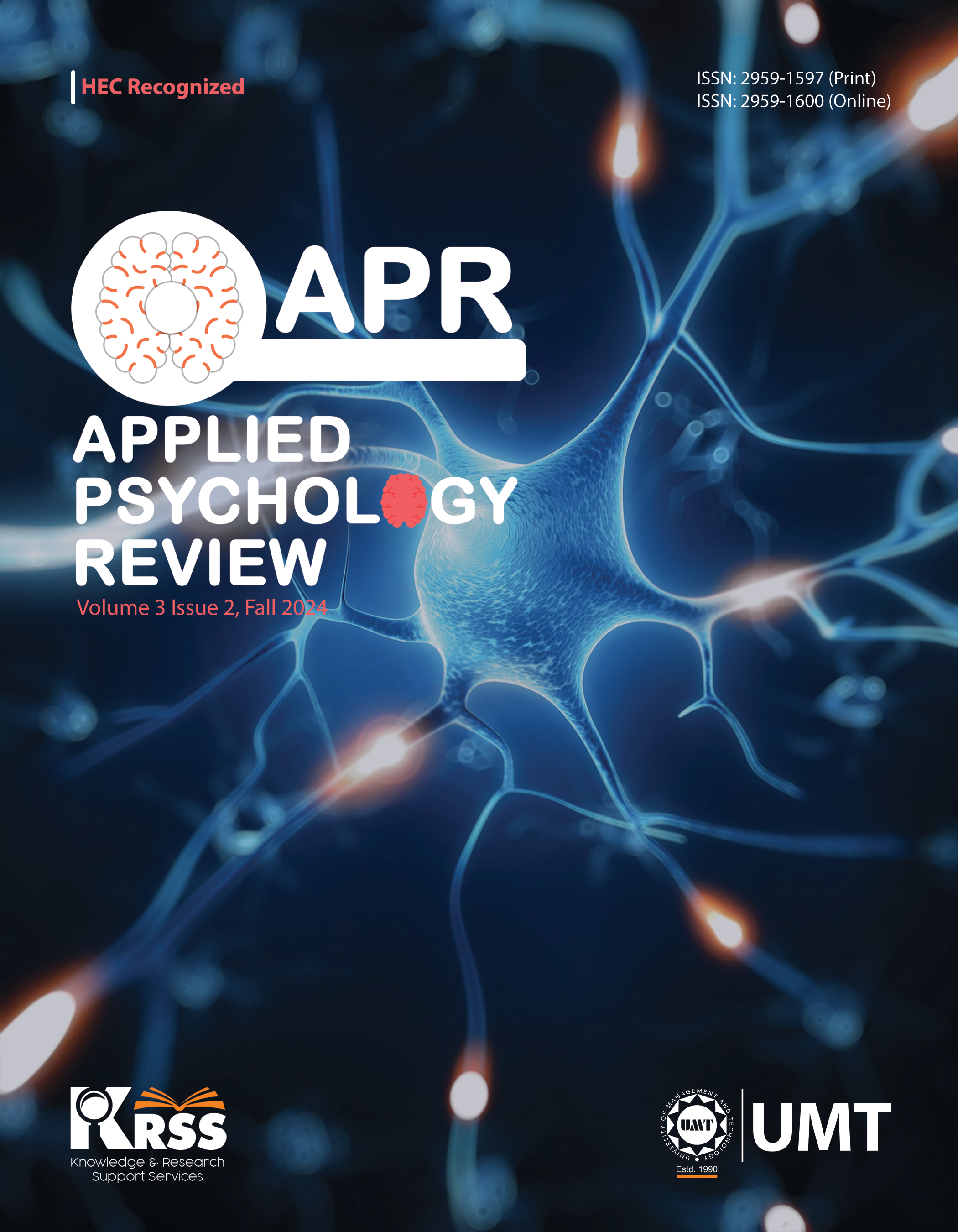From Hostility to Vulnerability: Twitter's Shifting Discourse on Masculinity and its Implications
Abstract
 Abstract Views: 0
Abstract Views: 0
Toxic masculinity refers to negative attitudes and behaviours including aggression, violence, dominance over other genders and weak, restricted positive emotional expression typically associated with men. It further includes marginalising any other who doesn’t believe or abide by these values. Through triangulating qualitative methods including thematic analysis, sentiment analysis integration and in-depth interview analysis, this study seeks to conceptualise the multifaceted nature of toxic masculinity on Twitter(X). Furthermore, the research explores the harmful influence of toxic masculinity while also highlighting the instances of resistance and the emergence of evolving discussions on masculinity within online communities. Repositioned masculinities and sexualization of women, aggression and intimidation, emotional suppression, and constructing and constricting gendered frontiers emerged as the main themes of the study. Despite the algorithmic bias, social media offers great potential to provide insights towards identifying the issues and possibilities of developing inclusive and safe online spaces. The environments where vulnerability finds acceptance and harmful norms are effectively challenged. Thereby, this research paves the way for further investigation by employing diverse methods and fostering interdisciplinary collaboration to shift the narrative and promote safe spaces. Moreover, it attempts to fully grasp the evolving tapestry of masculinity in the digital age and address its complex manifestations.
Downloads
References
Anwary, A., & Istiadah, I. (2024). Exploring the complex narratives of toxic masculinity on the Instagram account@ thegentlemanrising. Lire Journal, 8(1), 199–216.
Banet-Weiser, S. (2018). Empowered: Popular feminism and popular misogyny. Duke University Press.
Connell, R. W., & Messerschmidt, J. W. (2005). Hegemonic masculinity: Rethinking the concept. Gender & Society, 19(6), 829–859. https://doi.org/10.1177/0891243205278639
DeLisle, J., Goldstein, A., & Yang, G. (Eds.) (2016). The internet, social media, and a changing China. University of Pennsylvania Press.
DeMilt, J. (2023). The origins of Twitter. Pennington Creative. https://penningtoncreative.com/the-origins-of-twitter/#:~:text=The%20origins%20of%20Twitter%20date,similar%20to%20sending%20text%20messages.
Dym, B., & Fiesler, C. (2020, January 6–8). When social norms fail [Paper presentation]. The 2020 ACM International Conference on Supporting Group Work, Sanibel Island, USA.
Foss, K. (2022, November 14). What is toxic masculinity and how it impacts mental health? Anxiety and Depression Association of America. https://adaa.org/learn-from-us/from-the-experts/blog-posts/consumer/what-toxic-masculinity-and-how-it-impacts-mental.
Freelon, D., Marwick, A., & Kreiss, D. (2020). False equivalencies: Online activism from left to right. Science, 369(6508), 1197–1201. https://doi.org/10.1126/science.abb2428
Good, G. E., Dell, D. M., & Mintz, L. B. (1989). Male role and gender role conflict: Relations to help seeking in men. Journal of Counseling Psychology, 36(3), 295– 300.
Haase, C. D. (2021). Virtual manhood acts within social networks: the enactment of toxic masculinity on Reddit (Publication No. 28643326) [Doctoral dissertation, James Madison University]. ProQuest Dissertations & Theses.
Harrington, C. (2021). What is “Toxic Masculinity” and why does it matter? Men and Masculinities, 24(2), 345–352. https://doi.org/10.1177/1097184X20943254
Harris, B. (2021). Toxic masculinity: An exploration of traditional masculine norms in relation to mental health outcomes and help-seeking behaviours in college-aged males [Doctoral dissertation, University of South Carolina]. University Libraries. https://scholarcommons.sc.edu/senior_theses/431/
Hong, S., & Kim, S. H. (2016). Political polarization on twitter: Implications for the use of social media in digital governments. Government Information Quarterly, 33(4), 777–782. https://doi.org/10.1016/j.giq.2016.04.007
Horlacher, S. (2015). Configuring masculinity in theory and literary practice. Brill.
Huszár, F., Ktena, S. I., O’Brien, C., Belli, L., Schlaikjer, A., & Hardt, M. (2022). Algorithmic amplification of politics on Twitter. Proceedings of the National Academy of Sciences, 119(1), e2025334119. https://doi.org/10.1073/pnas.2025334119
Ivcevic, Z., & Ambady, N. (2013). Face to (face) book: The two faces of social behaviour? Journal of Personality, 81(3), 290–301. https://doi.org/10.1111/j.1467-6494.2012.00804.x
Kirby, V. (2006). Judith Butler: Live theory. Bloomsbury Publishing.
Larke-Walsh, G. S. (2019). ‘The King’s Shilling’: How Peaky Blinders uses the experience of war to justify and celebrate toxic masculinity. Journal of Popular Television, 7(1), 39–56. https://doi.org/10.1386/jptv.7.1.39_1
Massanari, A. (2020). Fake news: Understanding media and misinformation in the digital age. In M. Zimdars & K. McLeod (Eds.), Reddit’s alt-right: Toxic masculinity, free speech, and/r/The_Donald (pp 179–190). MIT Press.
Moloney, M. E., & Love, T. P. (2018). Assessing online misogyny: Perspectives from sociology and feminist media studies. Sociology Compass, 12(5), e12577. https://doi.org/10.1111/soc4.12577
Nigam, S. (2021). Domestic violence law in India: myth and misogyny. Routledge India.
Núñez, MIL (2013). The construction of masculinity and its relationship with gender violence. Comunitania: International Journal of Social Work and Social Sciences, (5), 61–84.
Parent, M. C., Gobble, T. D., & Rochlen, A. (2019). Social media behavior, toxic masculinity, and depression. Psychology of Men & Masculinities, 20(3), 277–287.
Pleck, J. H., Sonenstein, F. L., & Ku, L. C. (1993). Masculinity ideology: Its impact on adolescent males' heterosexual relationships. Journal of Social Issues, 49(3), 11–29.
Poland, B. (2016). Haters: Harassment, abuse, and violence online. Potomac Books.
Rasmussen, M. L., Haavind, H., & Dieserud, G. (2018). Young men, masculinities, and suicide. Archives of Suicide Research, 22(2), 327–343. https://doi.org/10.1080/13811118.2017.1340855
Real, T. (1998). I don't want to talk about it: Overcoming the secret legacy of male depression. Simon & Schuster.
Rubin, J. D., Blackwell, L., & Conley, T. D. (2020, April 25–30). Fragile masculinity: Men, gender, and online harassment [Paper presentation]. The 2020 CHI conference on human factors in computing systems. Honolulu, USA.
Schwalbe, M. (2015). Manhood acts gender and the practices of domination. Routledge.
Skeggs, B. (2019). The forces that shape us: The entangled vine of Gender, race, and class. The Sociological Review, 67(1), 28–35. https://doi.org/10.1177/0038026118821334
Waling, A. (2023). ‘Inoculate boys against toxic masculinity’: Exploring discourses of men and masculinity in# Metoo commentaries. The Journal of Men’s Studies, 31(1), 130–156. https://doi.org/10.1177/10608265221092044
Wright, M. F. (2020). The role of technologies, behaviors, gender, and gender stereotype traits in adolescents’ cyber aggression. Journal of Interpersonal Violence, 35(7-8), 1719–1738. https://doi.org/10.1177/0886260517696858
Zimdars, M., & McLeod, K. (Eds.). (2020). Fake news: Understanding media and misinformation in the digital age. MIT Press.
Copyright (c) 2024 Sidra Afzal, Inam-ul-Haq, Uzma Ilyas, Jolel Miah, Okeme Phillip Obuju

This work is licensed under a Creative Commons Attribution 4.0 International License.




